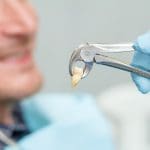Apicoectomy or Endodontic Surgery is a dental procedure that is performed to remove infected or damaged tissue at the tip of a tooth root. It is often used as a last resort to save a tooth that would otherwise need to be extracted. In this article, we will delve deeper into what an apicoectomy is, when it is needed, how it is performed, and what to expect during and after the procedure.
What is Apicoectomy?
An apicoectomy, also known as root-end surgery, is a dental procedure that involves the removal of the infected or inflamed tissue at the tip of a tooth root. It is often used as a last resort to save a tooth that would otherwise need to be extracted. This surgical procedure is typically recommended when other treatments, such as a root canal, endodontic retreatment, have failed to alleviate the problem.
When is Apicoectomy Needed?
An apicoectomy may be necessary when an infection, inflammation, or abscess develops at the tip of a tooth root, even after a root canal procedure has been performed. This can occur due to a variety of reasons, such as:
- A persistent infection that cannot be cleared with antibiotics
- A small fracture or crack in the tooth that allows bacteria to enter
- Narrow or curved root canals that were not adequately cleaned during a root canal procedure
- A buildup of calcium deposits in the root canal that prevent successful treatment
If left untreated, an infected or inflamed tooth root can lead to pain, swelling, and even tooth loss. An apicoectomy may be the best option to save the tooth and alleviate these symptoms.
How is Apicoectomy Performed?
An apicoectomy is typically performed by an oral surgeon or an endodontist (a dentist who specializes in root canal procedures). The procedure is usually done under local anesthesia, meaning that the patient is awake but numbed in the area of the surgery.
During the procedure, the surgeon will make a small incision in the gum tissue near the affected tooth to expose the root. They will then remove the infected or damaged tissue at the tip of the root and reshape the end of the root to allow for a proper seal. A small filling is then placed to seal the end of the root and prevent further infection.
After the procedure, the surgeon will close the incision with stitches and place a small bandage over the area to help with healing. The entire procedure typically takes between 30 minutes and an hour.
What to Expect After Apicoectomy?
After an apicoectomy, you may experience some swelling and discomfort in the area for several days. You can manage this with over-the-counter pain relievers and by applying an ice pack to the affected area.
You should avoid hard or crunchy foods for several days after the procedure to allow the incision site to heal. Your surgeon will also give you specific instructions on how to care for the area, including how to brush and floss around the affected tooth.
Most people are able to return to their normal activities within a few days of the procedure, but you should avoid strenuous exercise or activities that could put pressure on the affected area for at least a week.
Benefits of Apicoectomy
One of the biggest benefits of an apicoectomy is that it can save a tooth that would otherwise need to be extracted. Losing a tooth can lead to a host of problems, including difficulty eating and speaking, changes in facial structure, and an increased risk of gum disease and other dental problems.
Another benefit of an apicoectomy is that it can help alleviate the pain and discomfort associated with an infected or inflamed tooth root. This can improve your quality of life and allow you to eat, speak, and smile with confidence.
Risks of Apicoectomy
As with any surgical procedure, there are some risks associated with apicoectomy. These include:
- Infection
- Nerve damage
- Sinus problems
- Root fracture
Infection
There is a risk of infection after the procedure, which can cause swelling, pain, and fever. You can reduce this risk by following your surgeon’s post-operative instructions carefully and keeping the area clean.
Nerve damage
The surgery can sometimes damage the nerves in the area, which can lead to numbness, tingling, or other sensory changes. However, this is rare and usually temporary.
Sinus problems
The surgery can sometimes affect the sinuses, which can cause sinus pain or pressure. This is more likely to happen with upper teeth that are near the sinuses.
Root fracture
The procedure can sometimes cause the root of the tooth to fracture, which can make it more difficult to save the tooth.
Overall, the risks associated with apicoectomy are relatively low, and the benefits of the procedure typically outweigh the risks.
Conclusion
Apicoectomy is a last resort procedure that is used to save a tooth that would otherwise need to be extracted. It involves the removal of infected or damaged tissue at the tip of a tooth root and is typically recommended when other treatments, such as a root canal, have failed.
The procedure is relatively simple and is typically done under local anesthesia. Most people are able to return to their normal activities within a few days, and the benefits of the procedure typically outweigh the risks.
If you have an infected or inflamed tooth root and are considering an apicoectomy, talk to your dentist or oral surgeon to determine if it is the right treatment option for you. With proper care and follow-up, an apicoectomy can help save your tooth and improve your overall dental health.





